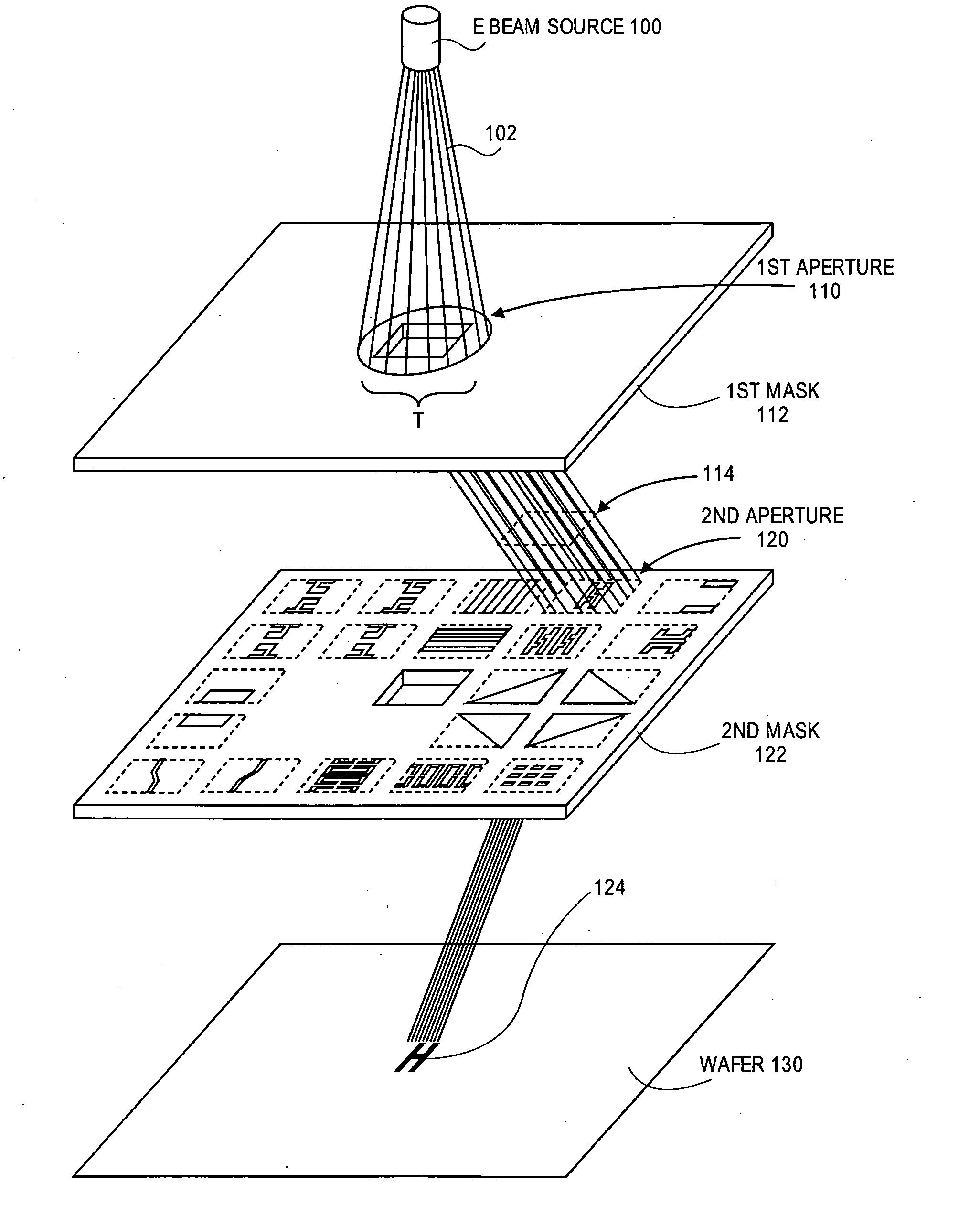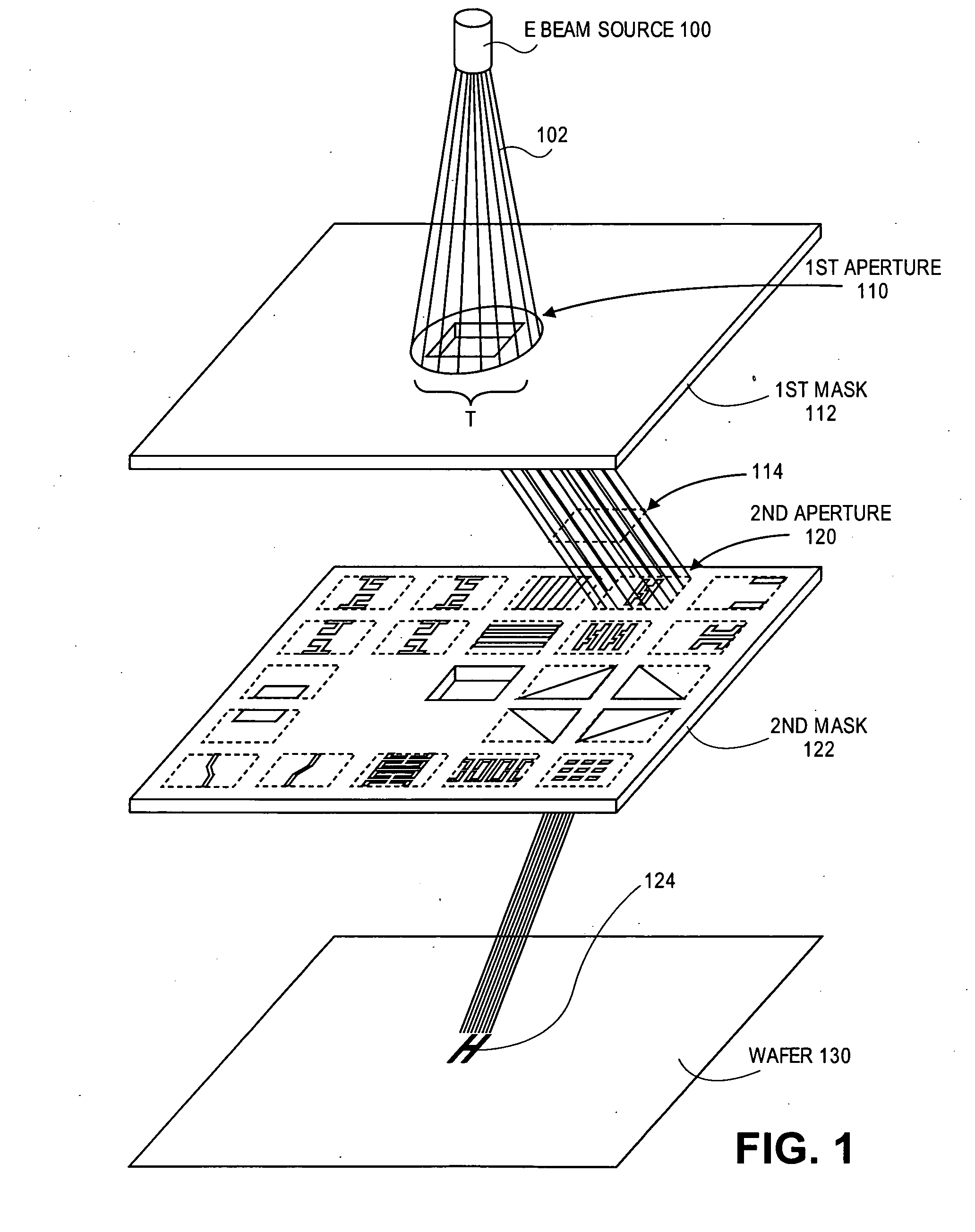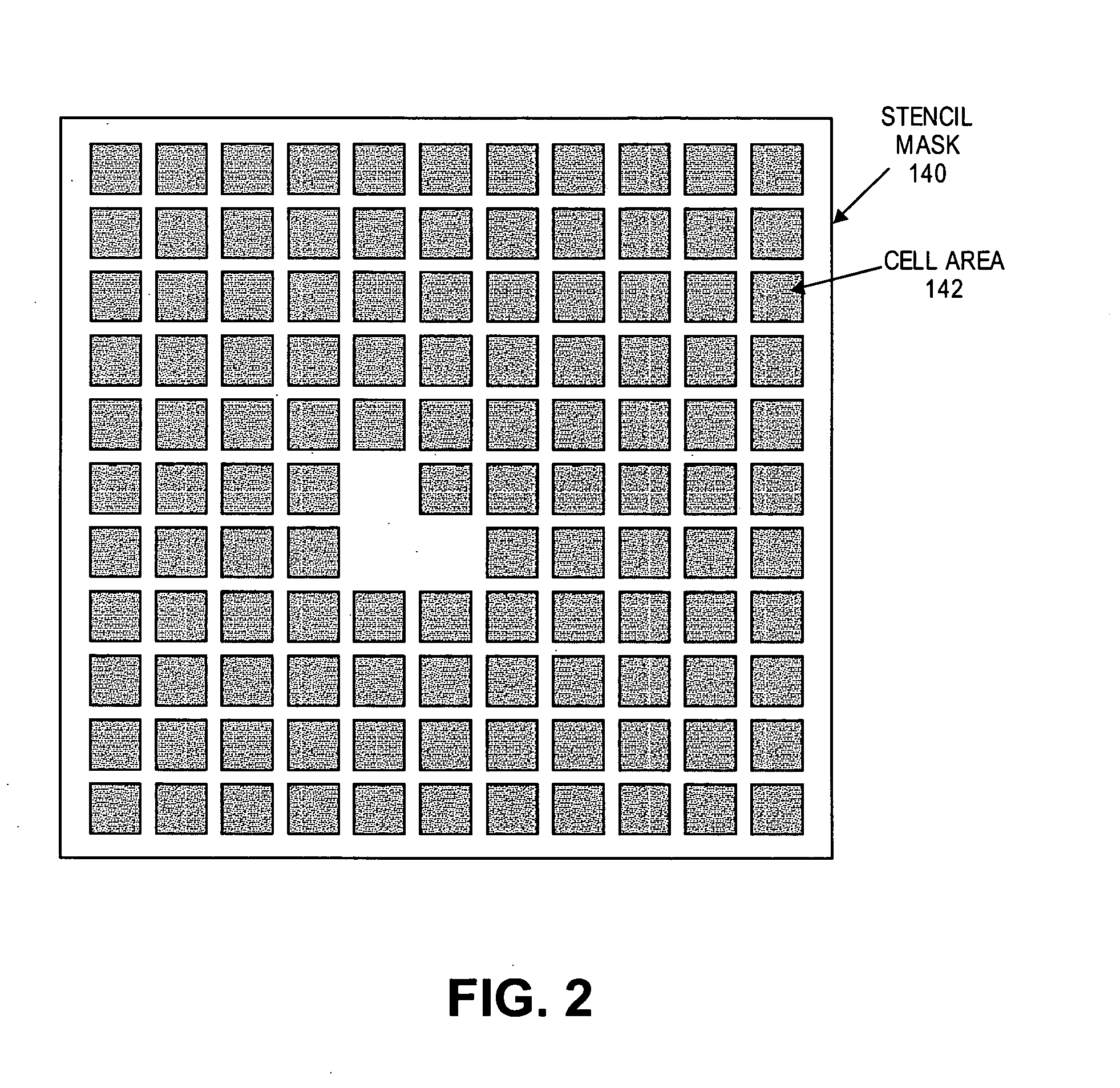Stencil design and method for cell projection particle beam lithography
a particle beam lithography and stencil technology, applied in the field of particle beam lithography, can solve the problems of low manufacturing yield, difficult accurate transcription, and significant optical proximity effect, and achieve the effect of reducing the eb writing tim
- Summary
- Abstract
- Description
- Claims
- Application Information
AI Technical Summary
Benefits of technology
Problems solved by technology
Method used
Image
Examples
Embodiment Construction
[0036]Various embodiments of the invention are described herein with reference to the drawings. It should be noted that the drawings are not drawn to scale and that elements of similar structures or functions are represented by like reference numerals throughout the drawings.
[0037]The following discussion describes EB direct writing (EBDW) as an application of particle beam lithography and should not be limited to only EB direct writing (EBDW), but the this invention can be applied to mask writing using an electron beam (EB) writer with cell projection (CP) capability, in a similar manner, resulting in an improved throughput.
[0038]Accordingly, it should be appreciated that this invention may also be applied to other drawing technologies with transcribed patterns using at least two apertures (stencil masks) and using other types of particle beams other than an electron beam (EB), such as an optical (light) laser beam, an X-ray beam or any other particle beams that run straight and st...
PUM
| Property | Measurement | Unit |
|---|---|---|
| area | aaaaa | aaaaa |
| area | aaaaa | aaaaa |
| shape | aaaaa | aaaaa |
Abstract
Description
Claims
Application Information
 Login to View More
Login to View More - R&D
- Intellectual Property
- Life Sciences
- Materials
- Tech Scout
- Unparalleled Data Quality
- Higher Quality Content
- 60% Fewer Hallucinations
Browse by: Latest US Patents, China's latest patents, Technical Efficacy Thesaurus, Application Domain, Technology Topic, Popular Technical Reports.
© 2025 PatSnap. All rights reserved.Legal|Privacy policy|Modern Slavery Act Transparency Statement|Sitemap|About US| Contact US: help@patsnap.com



